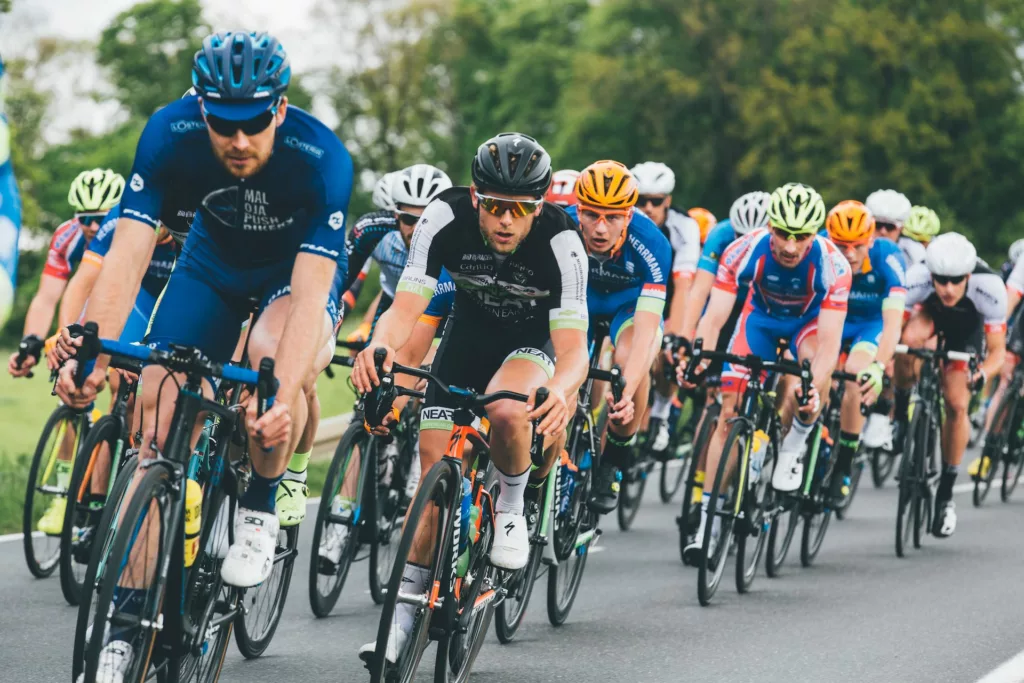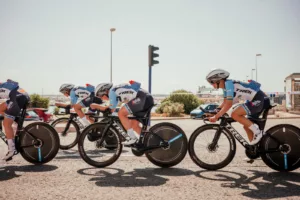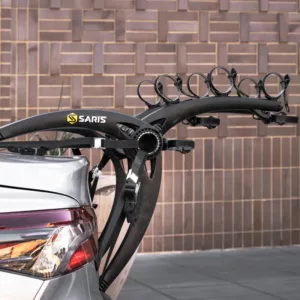Road cycling safely in a group or in traffic often hinges on clear communication, and hand signals and calls are crucial for this. This article serves as an essential guide to the most commonly used road cycling hand signals and verbal calls. We’ll cover everything from indicating turns and stopping to signalling hazards on the road. Understanding and using these signals properly can greatly enhance safety for both the cyclist and others on the road. Whether you’re new to road cycling or looking to brush up on your group riding etiquette, this guide will equip you with the necessary tools for effective communication while riding.
Table of Contents
ToggleUnderstanding the Most Common Hand Signals in Road Cycling
Road cycling is not just about pedalling, it’s also about communication. Hand signals are a crucial part of this communication, helping to ensure safety and coordination among cyclists. The most common hand signals include the left turn, right turn, and stop or slowing down signals.
To indicate a left turn, simply extend your left arm out to the side. For a right turn, there are two commonly accepted signals. You can either extend your right arm out to the side or raise your left arm up with your elbow bent at a 90-degree angle and your hand pointing upwards.
To signal that you’re slowing down or stopping, extend your left arm out with your elbow bent and your hand pointing downwards. It’s important to make these signals clearly and in good time, so other cyclists and motorists can react appropriately.
In addition to these basic signals, there are other signals that might be used to indicate hazards, such as potholes or loose gravel. These usually involve pointing towards the hazard with the appropriate hand or shaking the hand in a ‘wavy’ motion to indicate loose debris.
Practising these signals and using them consistently can greatly enhance your safety and the safety of others on the road. Remember, these signals are not just for the benefit of other cyclists, but also for motorists who may not be familiar with cycling etiquette.
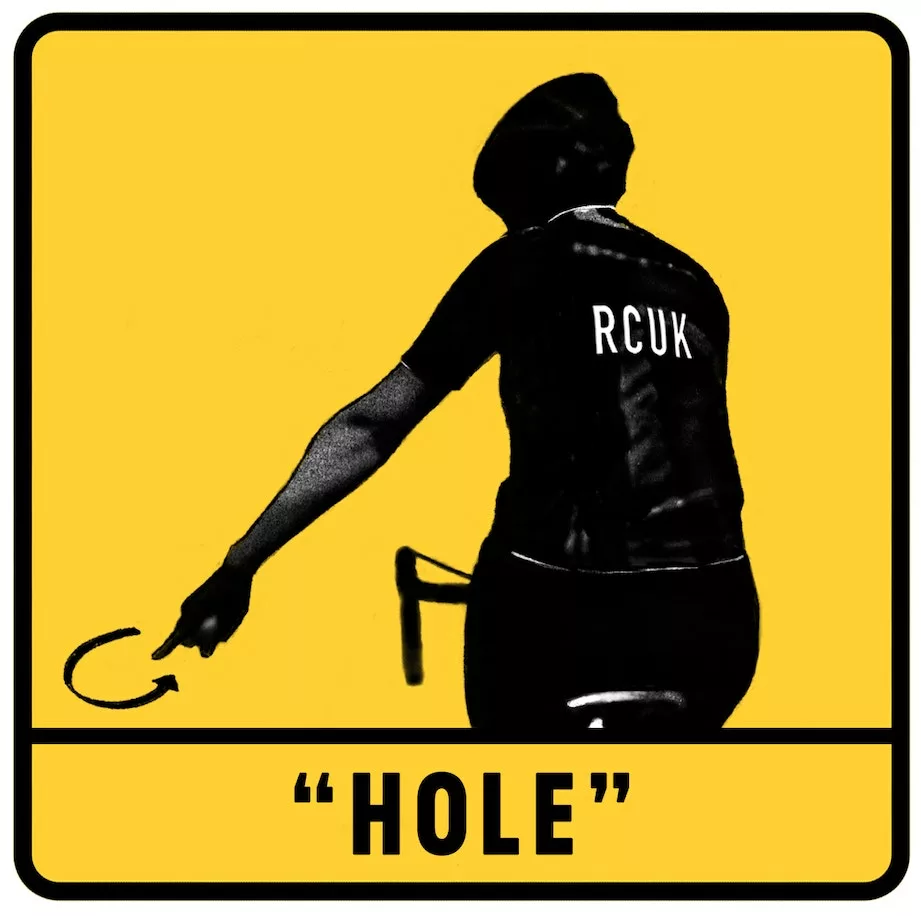
Effective Communication with Other Cyclists During a Ride
Communication is key when cycling, especially when riding in a group. Hand signals are an essential part of this communication, but they’re not the only way to convey messages. Verbal communication is also important, especially when the hand signals might not be clearly visible or understood.
When riding in a group, it’s important to communicate your intentions clearly and in good time. If you’re planning to turn, slow down, or stop, make sure to signal this well in advance. This gives other cyclists time to react and adjust their riding accordingly.
Verbal calls can also be used to alert others to your actions or to warn them of potential hazards. Common calls include “on your left” when overtaking, “car back” to warn of an approaching vehicle from behind, and “slowing” or “stopping” when reducing speed or coming to a halt.
In addition to communicating your own actions, it’s also important to relay messages from cyclists ahead or behind you. This can help ensure that all members of the group are aware of upcoming hazards or changes in direction.
Remember, effective communication can greatly enhance the safety and enjoyment of your ride. So, make sure to use both hand signals and verbal calls consistently and clearly.
The Safety Implications of Not Using Hand Signals While Cycling
Cycling, especially on busy roads, can be a risky activity. One of the key ways to mitigate these risks is through effective communication, and that’s where hand signals come in. Failing to use hand signals can have serious safety implications.
Without hand signals, other road users have no way of knowing your intentions. This can lead to confusion and potentially dangerous situations. For example, if you’re planning to turn but don’t signal, a motorist might not anticipate your action and could collide with you. Similarly, if you’re slowing down or stopping without signalling, cyclists or vehicles behind you might not have enough time to react, leading to a potential rear-end collision.
Hand signals are also crucial when riding in a group. Without them, other cyclists won’t know when you’re planning to change direction or speed, which can lead to collisions or other accidents within the group. In short, failing to use hand signals not only puts you at risk but also endangers other road users. So, for the sake of everyone’s safety, it’s crucial to use hand signals consistently and correctly.
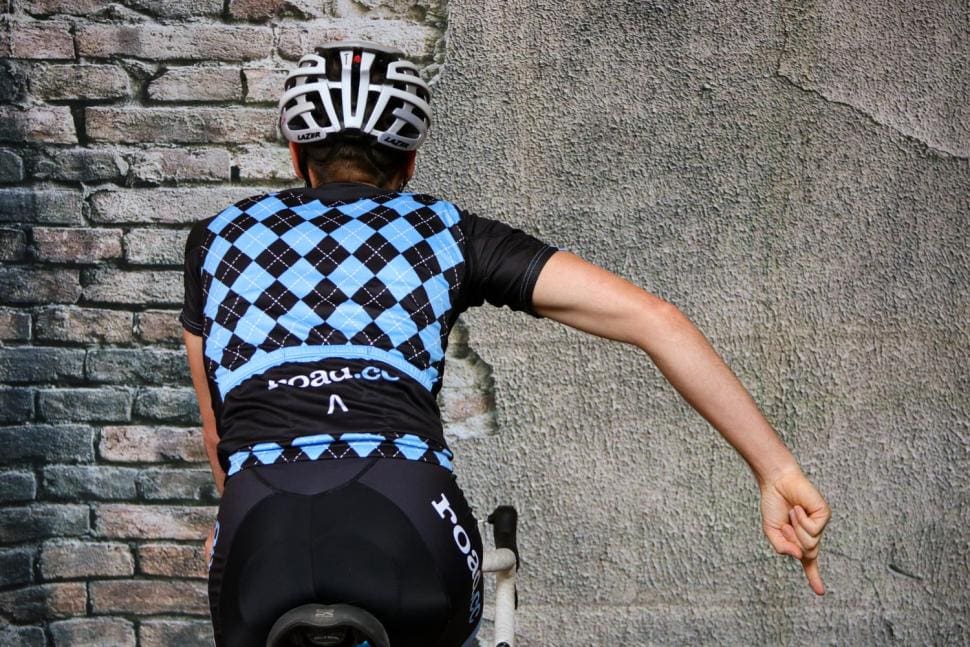
Practising and Perfecting Your Hand Signals for Road Cycling
Like any skill, perfecting your hand signals for road cycling requires practice. Here are some tips to help you get started. Firstly, familiarise yourself with the common hand signals. You can find diagrams and videos online, or you might find it helpful to watch other cyclists and observe their signals.
Once you’re familiar with the signals, practice them in a safe, controlled environment, such as an empty car park or quiet residential street. Practice making the signals clearly and confidently, and make sure you’re comfortable taking one hand off the handlebars. It’s also important to practice looking over your shoulder before making a signal or manoeuvre. This helps you check for other road users and is a crucial part of safe cycling. Remember, the goal is to make your signals second nature, so you can use them without thinking. This might take time, but with consistent practice, you’ll get there.
Finally, always remember that safety is paramount. If you’re not comfortable making a hand signal in a certain situation, don’t force it. It’s better to keep both hands on the handlebars and stay in control of your bike.
Understanding the Different Calls Used in Road Cycling
In addition to hand signals, verbal calls are a crucial part of communication in road cycling. These calls can alert other cyclists to your actions, warn them of hazards, or convey other important information. Here are some of the most common calls and what they mean.
“On your left/right” – This is used when overtaking another cyclist. It lets them know which side you’re passing on, so they can stay clear and avoid any sudden moves.
“Car up/down” – These calls are used to alert other cyclists to the presence of a car, either approaching from behind or coming towards the group from the front. This often changes order by region but I was taught it was “down your mouth and up your bum” by a wise old member of my club.
“Slowing” or “Stopping” – These calls are used to let other cyclists know that you’re reducing your speed or coming to a halt. This gives them time to react and adjust their own speed.
“Hole” or “Glass” – These calls are used to warn other cyclists of hazards on the road, such as potholes or broken glass. The call is usually accompanied by a hand signal pointing towards the hazard.
Remember, these calls are not just for the benefit of other cyclists. They can also alert pedestrians and other road users to your presence and intentions, helping to keep everyone safe.
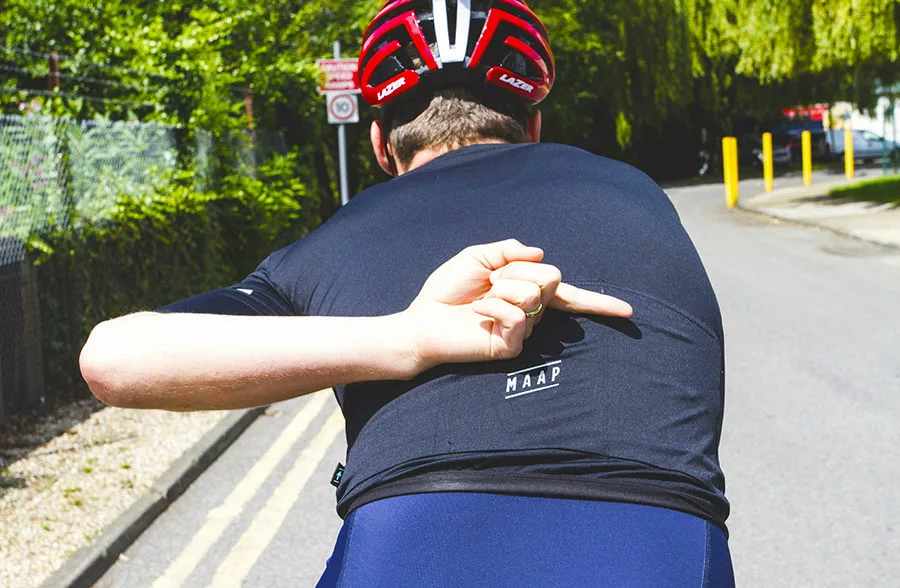
Incorporating Hand Signals and Calls into Your Cycling Routine
Incorporating hand signals and calls into your cycling routine is all about practice and consistency. Here are some tips to help you get started. Firstly, make a habit of using hand signals every time you turn, slow down, or stop, even if there are no other road users around. This will help you get used to making the signals and will make them second nature.
Similarly, practice using verbal calls when appropriate. Even if you’re cycling alone, saying the calls out loud can help you remember them and get used to using them. When cycling in a group, make sure to relay signals and calls from cyclists ahead or behind you. This helps ensure that all members of the group are aware of upcoming hazards or changes in direction.
Finally, remember that safety is paramount. If you’re not comfortable making a hand signal or call in a certain situation, don’t force it. It’s better to keep both hands on the handlebars and stay in control of your bike.
Universal Hand Signals and Calls Used by Cyclists Worldwide
While there are some variations in hand signals and calls used by cyclists in different countries, many signals and calls are universal. These include the basic signals for turning and stopping, as well as common calls such as “on your left” or “car back”.
However, it’s important to be aware that not all cyclists, especially those in different countries, might be familiar with the same signals and calls. Therefore, when cycling in a new area or country, it’s a good idea to research local cycling etiquette and learn any unique signals or calls.
Remember, the goal of hand signals and calls is to communicate clearly with other road users. So, even if you’re not sure about the local signals or calls, using the universal ones can still help ensure your intentions are understood.

Tips for Remembering Different Hand Signals and Calls
Remembering all the different hand signals and calls can seem daunting at first, but with a bit of practice, they’ll become second nature. Here are some tips to help you remember them.
Firstly, practice is key. The more you use the signals and calls, the easier they’ll be to remember. So, make a habit of using them every time you ride, even if there are no other road users around. Visual aids can also be helpful. Consider printing out a diagram of the hand signals and sticking it somewhere you’ll see it regularly, such as on your fridge or next to your bike. You could also find a cycling buddy and practice the signals and calls together. This can make the learning process more fun and interactive.
Finally, remember that it’s okay to make mistakes. If you forget a signal or call, don’t worry. Just keep practising and you’ll get the hang of it in no time.
Improving Your Overall Cycling Experience with Hand Signals and Calls
Hand signals and calls are not just about safety, they can also greatly enhance your overall cycling experience. Here’s how.
Firstly, using hand signals and calls can make your rides smoother and faster. By communicating your intentions clearly, you can avoid sudden stops or changes in direction, which can disrupt your rhythm and make your ride less enjoyable.
Secondly, hand signals and calls can help you feel more confident on the road. Knowing that you can communicate effectively with other road users can give you peace of mind and allow you to focus more on your ride.
Finally, hand signals and calls can enhance your sense of community with other cyclists. By using the same signals and calls, you’re part of a shared language and culture, which can make your rides more enjoyable and rewarding. So, whether you’re a seasoned cyclist or a beginner, incorporating hand signals and calls into your routine can greatly enhance your cycling experience.
Graphics from Sigma Sports, Road.CC and RoadCyclingUK


